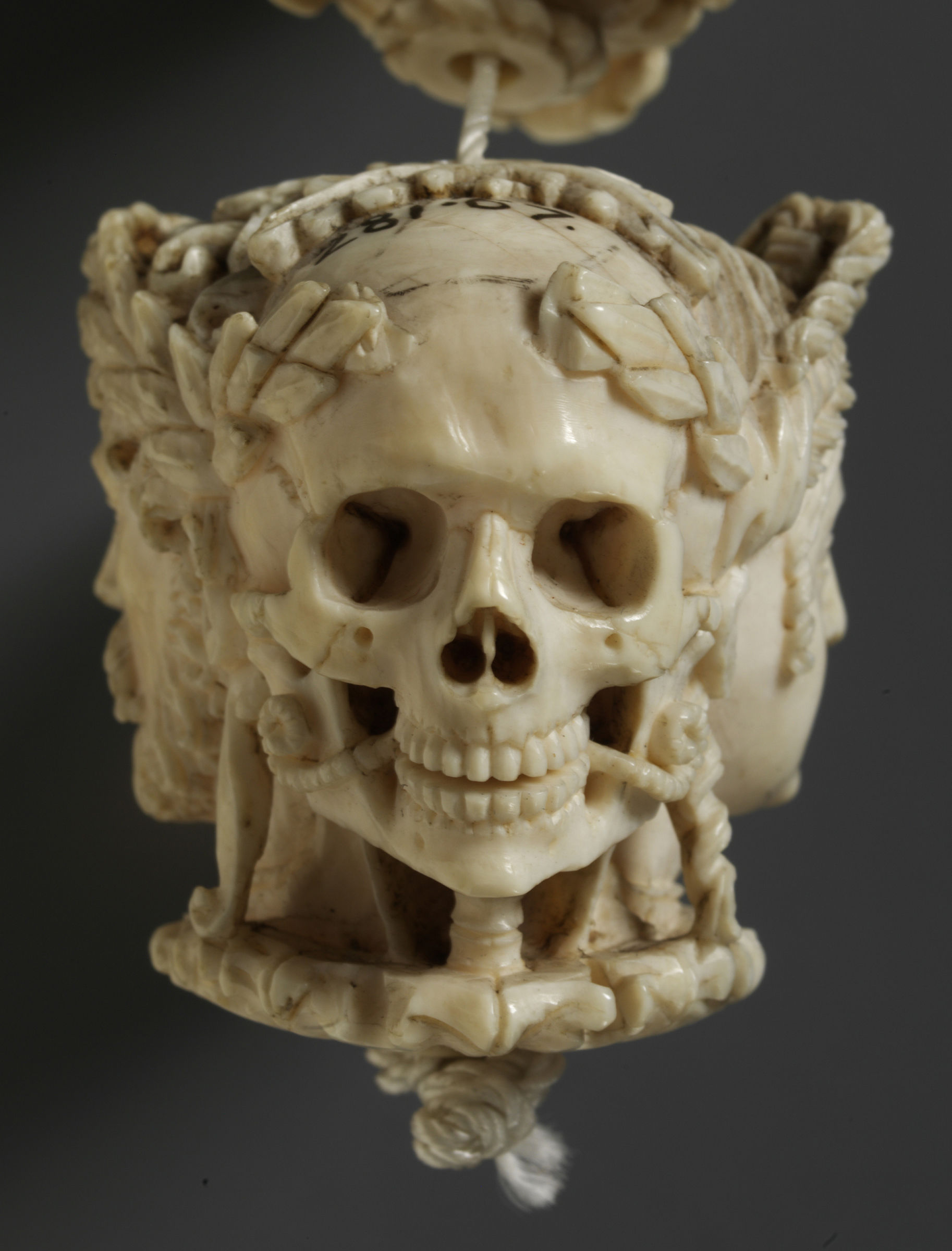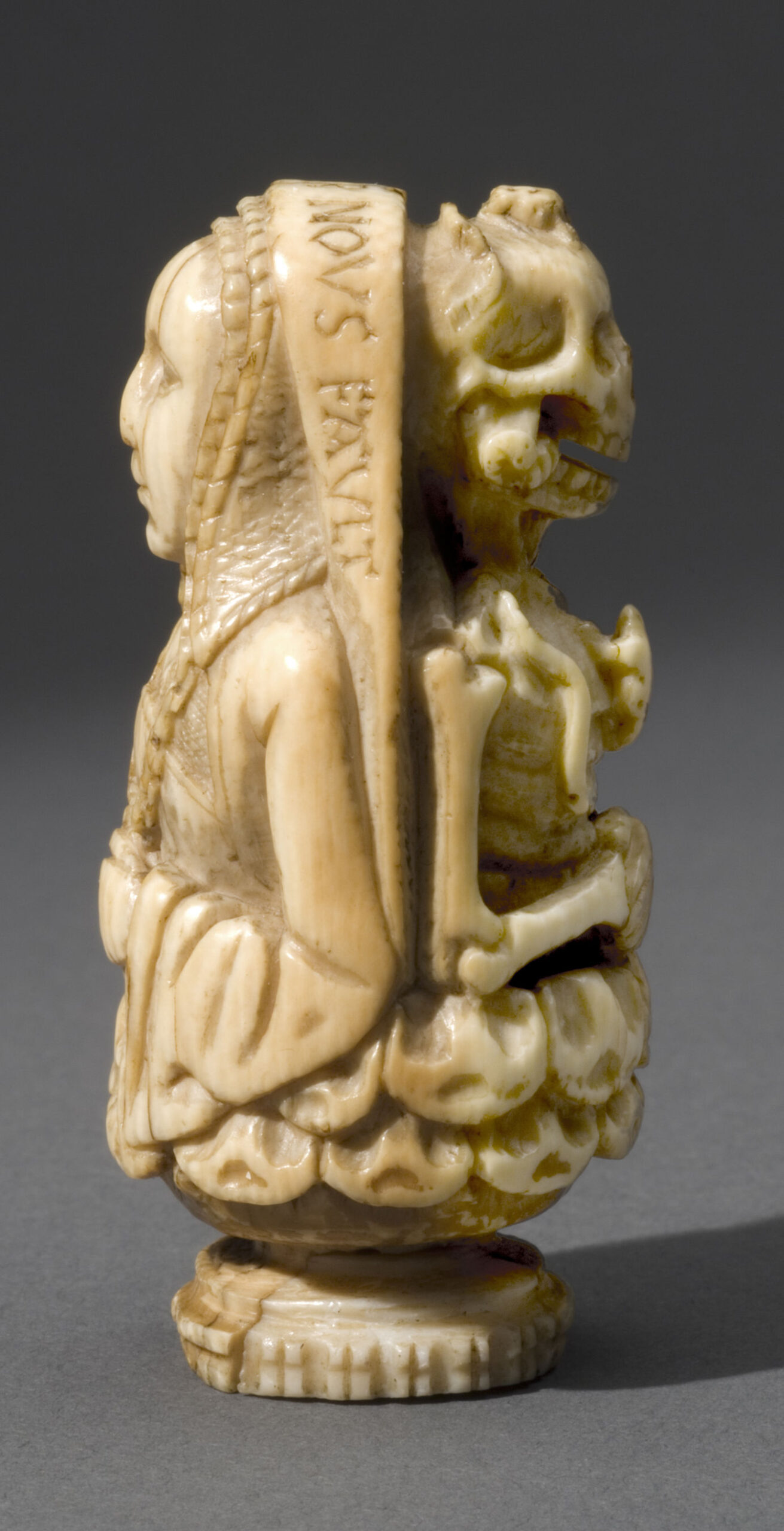Death takes form: exploring mortality at Museum of Art
September 8, 2017
 Courtesy of Bowdoin College Museum of Art
Courtesy of Bowdoin College Museum of ArtDeath is far from the minds of most college students. With its newest exhibition, “The Ivory Mirror,” the College Museum of Art attempts to show just how relevant questions of mortality are to the lives of Bowdoin students.
“This sort of exhibition … [gets] at these questions that I think, in my experience, most Bowdoin students are to some degree wrestling with already,” said Peter M. Small Associate Professor of Art History and exhibition curator Stephen Perkinson. “Which [are]: ‘Who am I?’ ‘What’s important in my life?’ ‘What do I want to accomplish?’ ‘What do I want to leave behind?’ ‘Why does that matter?’”
Through a series of carvings, paintings, manuscripts and sculptures, “The Ivory Mirror” presents the many ways in which Renaissance thinkers conceptualized death.
The first artifacts of the exhibit are intricately carved ivory prayer beads, featuring macabre images intended to serve as a reminder of mortality. These ivory “memento mori” have long been a subject of interest for Perkinson. When the Museum acquired one such ivory carving in 2011, Perkinson was inspired to curate an exhibition featuring the artifact, which culminated in the opening of “The Ivory Mirror” on June 24.
“Death has a leveling effect, and death comes upon you unexpectedly, so you should be prepared,” said Perkinson. “That basic message is sort of being told by these beads.”
 Courtesy of Bowdoin College Museum of Art
Courtesy of Bowdoin College Museum of ArtOther artifacts in the exhibit expand upon the themes introduced by the beads.
“The rest of the show is sort of thinking about the stories that these things tell,” said Perkinson. “They all have that same basic message of, ‘You will die, you are mortal, you must reckon with that.’ But they do it in interesting, unique ways.”
Other “memento mori” on display include illuminated manuscripts and paintings that convey death in light of religious ideology, artistry, humanism and anatomy.
The final portion of the exhibit, what Perkinson refers to as its “afterlife,” demonstrates how themes of mortality survived beyond the Renaissance. The last piece, “When H2 Leaves O” by Dutch artist Folkert de Jong, dates from just two years ago and reinforces the exhibit’s title. Upon approaching the piece, a holographic MRI image of the artist’s head appears alongside the viewer’s own reflection.
“He’s using medical imaging technology to look beneath the surface of his own skin, playing with the notion that that is a kind of self-examination, self-mirroring process,” said Perkinson.
The piece, as all of the artifacts in the exhibit, encourages the viewer to examine their own mortality and identity.
“The title, ‘Ivory Mirror,’ comes from the idea that you see expressed in a lot of the texts at this period, that these objects function as truthful mirrors for you,” said Perkinson. “A true mirror shows you the truth of who you are, and so the skull beneath the skin is the reality.”
“I would always end my tour [of the exhibit] on that object,” said Daniel Rechtschaffen ’18, summer curatorial and education assistant at the museum. “That was kind of a good way of … engaging viewers in a sort of jarringly personal way.”
The exhibition was designed with a multidisciplinary approach, intended to involve faculty and students from many corners of campus. Perkinson worked closely with professors in several departments, including Romance languages and literature, art history, philosophy and English, to incorporate the exhibit into regular course curricula.
“When we can find ways to have conversations with other departments, that’s, I think, really rewarding because we’ve always seen the arts as a platform for important conversations that extend beyond just simply art history,” said Frank Goodyear, co-director of the museum. “So it’s really exciting to be working with … departments around campus who are thinking about themes related to mortality.”
Museum Co-Director Anne Goodyear hopes that visitors will find both comfort and inspiration in viewing “The Ivory Mirror.”
“The message of the show could not be better positioned on a college campus, where young people are defining their sense of self,” she said. “I hope that the show will provide students here with an opportunity to realize that … these are questions that have been faced by generations and generations of young people over many centuries.”
The museum is hosting a variety of programming throughout the semester to complement the exhibition, including a series of lectures by professors and visitors, music performances related to the exhibition and screenings of modern horror films.
“The Ivory Mirror: The Art of Mortality in Renaissance Europe” will be on display through November 26.

Comments
Before submitting a comment, please review our comment policy. Some key points from the policy: